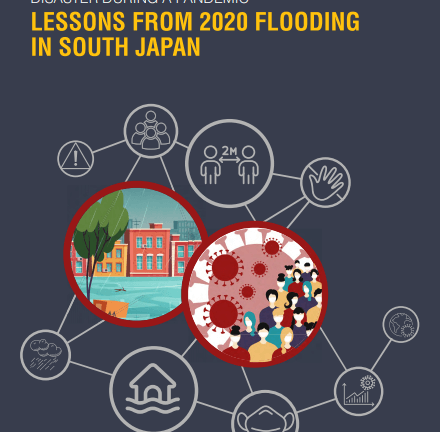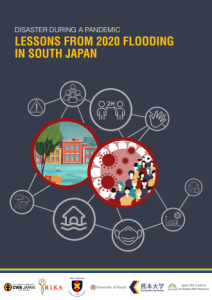
Disaster during a pandemic: Lessons from 2020 flooding in South Japanを発行しました
九州地方を襲った2020年7月豪雨は、新型コロナウイルスの猛威が広がる中で発生し、たくさんの方々が被災されました。その教訓から学び、世界に発信する事によって更なるレジリエンスを目指す意味を込め、感染症と洪水という複合的災害の教訓を「Disaster during a pandemic: Lessons from 2020 flooding in South Japan」と称し、英語にてまとめさせて頂きました。全文英語となっていますが、一人でも多くの方に読んでいただけたら幸いです。
As we prepare to commemorate 26th anniversary of the Great Hanshin earthquake (Kobe earthquake), we renew our commitment to further learn from each disaster events, for a safer tomorrow. The world has been undergoing increasingly complex risk landscapes over the recent years, and it is not enough to have policies that address one type of disaster at a time. CWS Japan commissioned a report titled “Disaster During A Pandemic: Lessons From 2020 Flooding in South Japan”, which focuses on the South Japan flooding of July 2020, and tries to understand how the COVID-19 pandemic has affected both the preparedness and the recovery. On July 4th, 2020, the southern prefectures of Japan, particularly Kumamoto and Kagoshima, experienced record-breaking heavy rain, causing devastating floods and landslides that killed at least 83 people and damaged over 15,000 buildings. The research for this report was done through extensive review of published data, and interviews conducted during filed visits with special permission. The authors hope that the findings of this research will bring to light the complex impacts and management implications of cascading disasters, and thus project the importance of a multi-hazard approach.

▶ Read the report ◀
